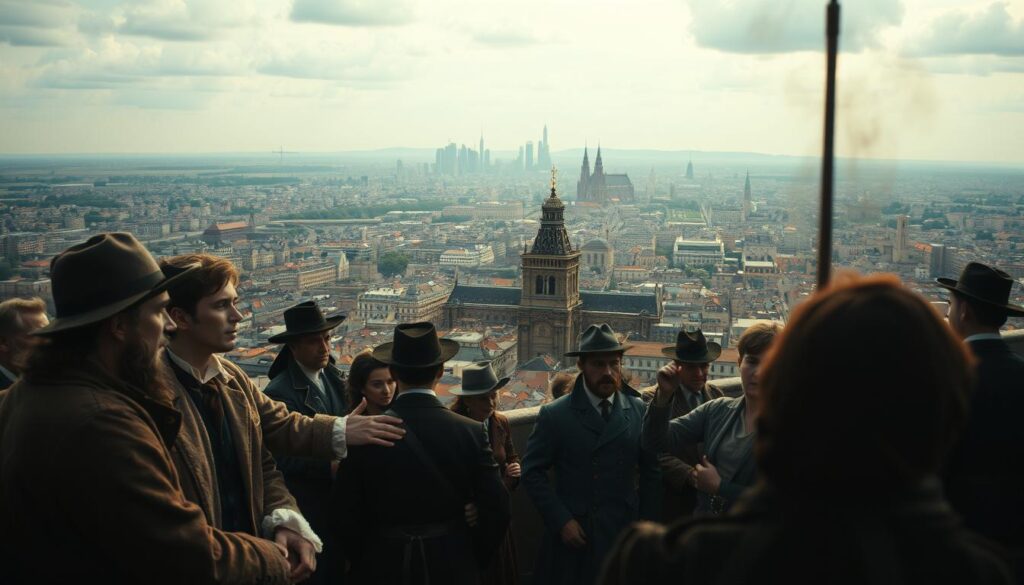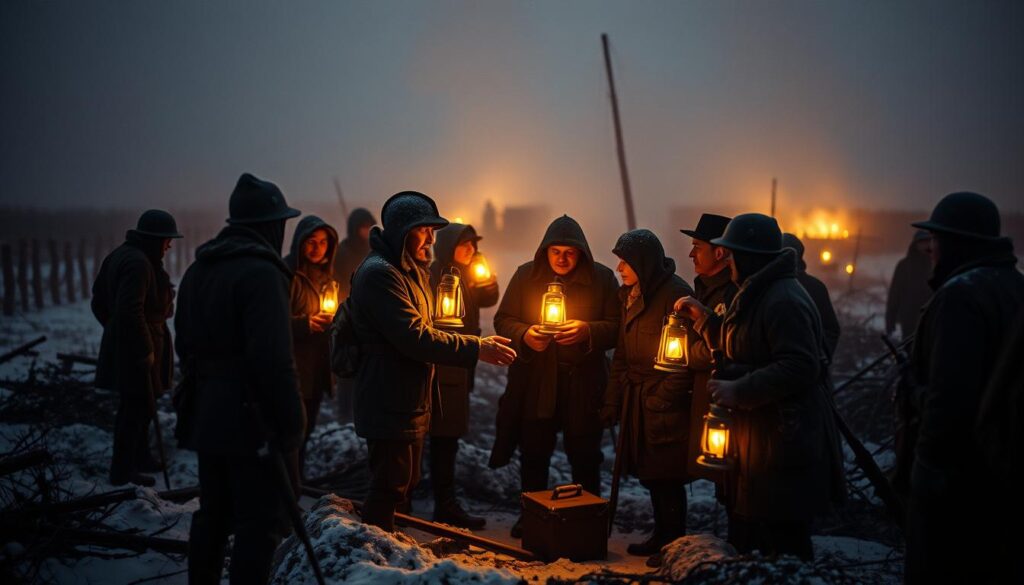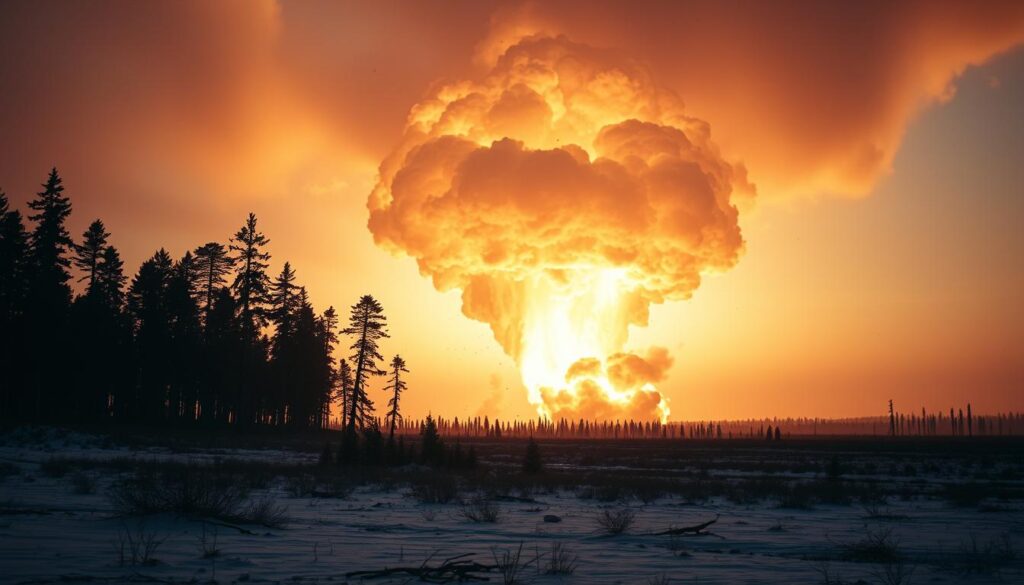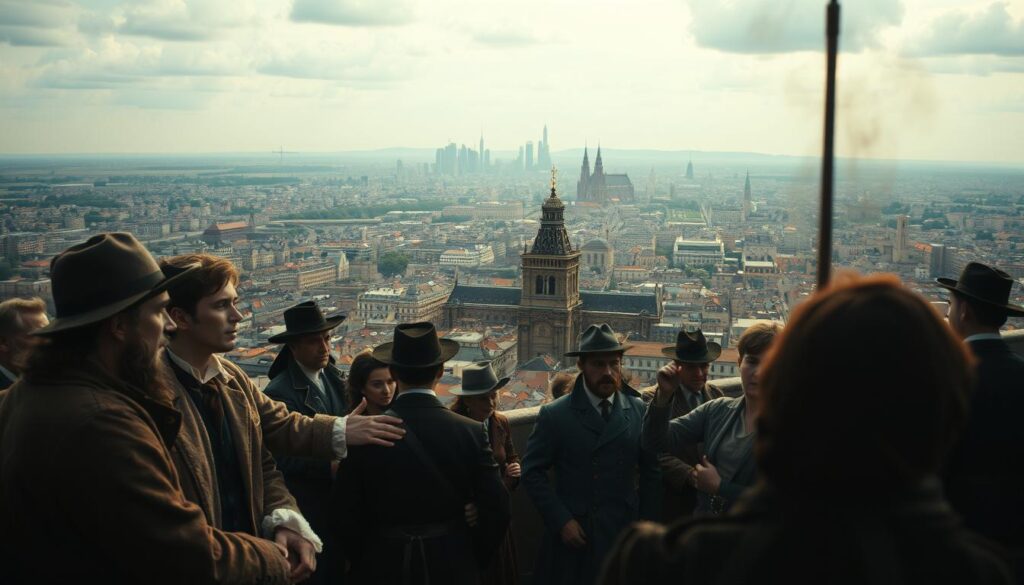10 Surprising Historical Events No One Talks About
10 Surprising Historical Events No One Talks About, Exploring rare historical events, we find hidden history that’s often overlooked. These mysteries capture our interest and offer new views of the past. By looking into these lesser-known events, we learn more about our world’s complexities.

From strange disasters to unexplained events, rare historical events give us a peek into the past. Discovering these hidden gems expands our knowledge and shows the depth of historical mysteries. In this article, we’ll explore these fascinating events and uncover long-hidden secrets.
Introduction to Rare Historical Events
As we dive into rare historical events, we see that history is more than what we learn in school. These events, though not well-known, have greatly influenced our world. By studying these mysteries, we gain a deeper understanding of the past and its connection to today.
Key Takeaways
- Exploring rare historical events can provide a fresh perspective on the past
- Hidden history has the power to captivate and intrigue
- Historical mysteries can help us understand the complexities of the past
- Rare historical events can broaden our knowledge and appreciation of history
- Uncovering hidden history gems can shed light on secrets that have been hidden for so long
The Hidden World of Rare Historical Events No One Talks About
Exploring forgotten events and unknown historical facts shows us how censorship has shaped our view of history. Many events have been hidden or altered, making us unaware of their true nature.
Censorship has been used to change how we see things, often to benefit those in power. This has led to a skewed view of history. By looking into censorship’s effects, we understand why some events are forgotten or ignored.
- Lack of documentation or records
- Intentional destruction of evidence
- Censorship and propaganda
- Limited access to information
It’s important to uncover lost history to truly understand the past. By revealing forgotten events and unknown facts, we get a clearer picture of our world. This knowledge helps us learn from history and make better choices for the future.
The Great Molasses Flood of Boston
The Great Molasses Flood happened on January 15, 1919, in Boston. A storage tank burst, releasing over 2.3 million gallons of molasses. This caused a huge wave of molasses to flow through the streets at 35 miles per hour.
This disaster killed 21 people and injured 150. It also caused a lot of damage.
This event was one of the most bizarre and tragic industrial accidents in the U.S. Cleaning up took months. The harbor stayed brown from the molasses until spring.
The Great Molasses Flood led to big changes in safety rules. These changes were made to prevent such disasters in the future.
Some key facts about the Great Molasses Flood include:
- 2.3 million gallons of molasses were released into the streets
- 21 people lost their lives in the disaster
- 150 people were injured
- The disaster led to major changes in safety regulations
The Great Molasses Flood of Boston was a tragic event. It showed how important safety rules are in industries. It reminds us of the bad effects of industrial accidents and the need for strict safety measures.
The Toledo War: When Michigan and Ohio Almost Went to Battle
The Toledo War was a key moment in American history. It was a border dispute between Michigan and Ohio in the 1830s. The fight was over the Toledo Strip, a 468-square-mile area both states wanted.
Both Michigan and Ohio wanted to grow their borders. They wanted control over trade routes and natural resources. The Toledo Strip, bordering Lake Erie, was crucial for access to shipping lanes.
The dispute over the Toledo Strip turned into a serious conflict. Both states started to prepare their militias for war. The situation was very tense.
Causes of the Conflict
- Disagreement over the Toledo Strip’s borders
- Economic interests, including trade routes and natural resources
- Territorial expansion and statehood
Thanks to diplomacy and compromise, the Toledo War ended in 1836. Congress gave the Toledo Strip to Ohio. But Michigan got the western Upper Peninsula as a trade-off. This deal ended the conflict and brought peace between the states.
The American Dancing Plague of 1518
In 1518, Strasbourg, France, saw hundreds of people dance non-stop for days. This strange historical event is still a mystery. Historians debate its causes and effects. It’s one of the weirdest strange historical events ever, making us all curious about what started it.
Records show the dancing plague was part of a bigger social phenomenon. It was linked to stress, anxiety, and social issues common back then. Understanding this dancing plague helps us see the context and triggers behind it.
Studying strange historical events like this gives us insights into human behavior. It shows how social phenomenon can influence us. By looking at the past, we can better understand ourselves and our actions.
Some possible reasons for the dancing plague include:
- Social and economic stress
- Anxiety and fear
- Mass hysteria
- Contagion and social influence
These factors, along with the social and cultural setting, likely created a perfect storm. This led to the dancing plague, a dancing plague that’s still one of the most intriguing strange historical events.
The Japanese Balloon Bombs of World War II
During World War II, Japan sent Japanese balloon bombs to the United States. They hoped to start forest fires and cause damage. This was part of Japan’s military history of using unusual tactics.
The bombs were made to carry fire-starting devices. They were aimed at California, Oregon, and Washington. The goal was to start fires in these western states.
The bombs had a big impact in America. There were reports of fires and explosions. The World War II era saw many creative strategies. The Japanese balloon bombs were one of them.
The US government tried to keep the news quiet. They wanted to avoid panic and keep people’s spirits up. This was done to maintain morale during a difficult time.
- Over 9,000 balloons were launched by the Japanese between 1944 and 1945
- At least 1,000 balloons are believed to have reached North America
- Six people were killed in Oregon when they discovered a balloon bomb in the woods
The Japanese balloon bombs are a fascinating part of military history. They show the creative and unusual strategies used during World War II.
The Christmas Truce of 1914: Beyond the Soccer Match
The Christmas Truce of 1914 was a remarkable event during World War I. Allied and German soldiers put down their arms to celebrate the holiday together. This was a rare moment of peace in one of the deadliest conflicts in history.
Before the truce, soldiers on both sides faced the harsh realities of war. But on Christmas Eve, something amazing happened. They started exchanging gifts, singing carols, and even playing soccer together. This spontaneous ceasefire showed the human spirit’s desire for peace.
Some key facts about the Christmas Truce include:
- It happened along the Western Front, where Allied and German soldiers were stationed.
- The truce wasn’t officially sanctioned by military leaders. It was a spontaneous event that spread along the front lines.
- Soldiers exchanged gifts, such as cigarettes and chocolate, and even shared stories and photos of their loved ones.

The Christmas Truce of 1914 was a significant event in World War I. It showed the humanity and compassion that existed even in war. It reminds us of the importance of peace and the need for diplomacy and understanding in resolving conflicts.
The Lost Roman Legion in Ancient China
The Roman Legion IX Hispana’s disappearance has sparked debate for centuries. This historical mystery has led to many theories. Some believe the legion might have gone to ancient China, leaving clues in Chinese records.
Chinese historians mention foreign soldiers arriving in their region. While the records are not clear, they hint at a lost Roman legion in ancient China. Archaeologists have found Roman artifacts in China, adding to the mystery.
- Chinese records of foreign soldiers in the region
- Archaeological discoveries of Roman artifacts in Chinese soil
- Historical accounts of the legion’s disappearance
These discoveries help us understand the historical mystery of the lost Roman legion. They suggest a link to ancient China.
The Tunguska Event: More Than Just a Meteor
The Tunguska event was a huge explosion in Siberia in 1908. It’s one of the most interesting and mysterious events in history. This historical disaster knocked down trees over 800 square miles, making scientists curious about its cause. Many think it was a meteor impact, with a big meteorite exploding in the sky.
Some important facts about the Tunguska event are:
- A huge explosion happened on June 30, 1908, in a remote part of Siberia.
- The blast flattened trees over more than 800 square miles.
- The reason for the explosion is still a mystery, but many believe it was a meteor impact.
- Scientists found evidence of a massive shockwave that caused a lot of damage.
Scientists are still studying the Tunguska event to figure out what caused it. Even though it’s called a meteor impact, the exact reason is still unknown. But one thing is clear – the Tunguska event was a historical disaster that had a big impact on the area. It still interests scientists and historians today.

The Hawaiian Royal Family’s Special Connection to Japan
The Hawaiian royal family has a rich history, with ties to many countries. Their bond with Japan is particularly interesting. This connection was built on mutual respect and historical diplomacy. The Hawaiian royals saw Japan as a key player in the Pacific.
Prince Jonah Kūhiō’s story highlights this connection. As a royal, he played a big role in improving Hawaii-Japan relations. He believed in the value of cultural exchange. He worked hard to bring the two nations closer together.
Key Aspects of the Relationship
- Prince Kūhiō’s efforts to promote cultural exchange and understanding between Hawaii and Japan
- The significance of historical diplomacy in shaping the relationship between the two nations
- The impact of the Hawaiian royal family’s connection to Japan on the region’s history and development
The bond between the Hawaiian royal family and Japan shows the strength of historical diplomacy and cultural exchange. Looking into this relationship helps us understand the Pacific region’s complex history.
Conclusion: Understanding History’s Forgotten Chapters
Exploring the Great Molasses Flood, the Toledo War, and other historical events has deepened our understanding of history. These forgotten chapters show us the complexity of the past. They remind us of the value of uncovering and keeping alive the rare stories that have shaped our world.
Looking into these historical events shows us that history is not always simple. It reveals the richness and diversity of human civilization. Stories like the Japanese Balloon Bombs and the Lost Roman Legion in ancient China are just a few examples. They inspire us to keep exploring and discovering the hidden stories of our past.
FAQ
What is the Great Molasses Flood of Boston?
On January 15, 1919, a huge tank of molasses burst in Boston’s North End. It sent a massive wave of molasses through the streets at 35 miles per hour. This disaster killed 21 people, injured 150, and caused a lot of damage.
What was the Toledo War?
The Toledo War was a fight over land between Michigan and Ohio in the 1830s. It was about the Toledo Strip, a small area along the border. The conflict almost turned violent but was eventually solved through politics.
What was the American Dancing Plague of 1518?
In 1518, hundreds of people in Strasbourg, France, danced uncontrollably for days. The cause and effects of this strange event are still unclear.
What were the Japanese Balloon Bombs of World War II?
During World War II, Japan launched balloon bombs against the U.S. They hoped to start forest fires and cause damage. The U.S. secretly responded to these threats, adding to the war’s intrigue.
What happened during the Christmas Truce of 1914?
In 1914, soldiers from both sides of the Western Front stopped fighting to celebrate Christmas. This rare moment of peace is a symbol of the war’s complexities.
What is the mystery of the Lost Roman Legion in Ancient China?
The Roman Legion IX Hispana’s disappearance is a mystery. This section will look at Chinese records and archaeological finds that shed light on this enigma.
What is the Tunguska Event?
In 1908, a massive explosion in Siberia flattened trees over 800 square miles. This section will explore theories, including a meteor impact, and ongoing research into this disaster.
What is the connection between the Hawaiian Royal Family and Japan?
This section will delve into the relationship between the Hawaiian royal family and Japan. It includes the story of Prince Jonah Kūhiō and the diplomatic ties between the two nations. This chapter of Pacific history reveals the complex alliances and cultural exchanges that shaped the region.
Source
https://www.buzzfeed.com/madisonmcgee/people-are-sharing-the-wildest-historical-events-that-are?utm
https://www.historyextra.com/period/general-history/strange-weird-historical-facts/?utm
https://listverse.com/2024/11/13/10-mind-blowing-facts-from-history-that-dont-seem-real/?utm
